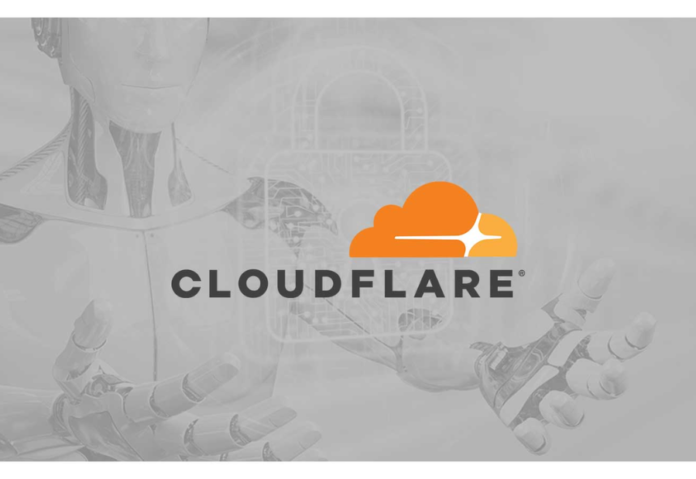
Insights reveal a record-breaking time-to-exploit of a new zero-day vulnerability, the largest DDoS attack in the history of the Internet, and increasing supply chain threats.
DUBAI, UAE, June 2024: Cloudflare, Inc. (NYSE: NET), the leading connectivity cloud company, today published its State of Application Security 2024 Report. Findings from this year’s report reveal that security teams are struggling to keep pace with the risks posed by organizations’ dependency on modern applications—the technology that underpins all of today’s most used sites. The report underscores that the volume of threats stemming from issues in the software supply chain and the increasing number of distributed denial of service (DDoS) attacks and malicious bots often exceed the resources of dedicated application security teams.
Today’s digital world runs on web applications and APIs. They allow e-commerce sites to accept payments, healthcare systems to securely share patient data, and power activities we do on our phones. However, the more we rely on these applications, the more the attack surface expands. This is further magnified by the demand for developers to quickly deliver new features—e.g., capabilities driven by generative AI. But if unprotected, exploited applications can lead to the disruption of businesses, financial losses, and the collapse of critical infrastructure.
“Web applications are rarely built with security in mind. Yet, we use them daily for all sorts of critical functions, making them a rich target for hackers,” said Matthew Prince, co-founder and CEO at Cloudflare. “Cloudflare’s network blocks an average of 209 billion cyber threats for our customers every single day. The layer of security around today’s applications has become one of the most essential pieces to making sure the Internet stays secure.”
Key findings from Cloudflare’s State of Application Security 2024 Report include:
- DDoS attacks continue to increase in number and volume: DDoS remains the most leveraged threat vector to target web applications and APIs, comprising 37.1% of all application traffic mitigated by Cloudflare. The top targeted industries were gaming and gambling, IT and the Internet, cryptocurrency, computer software, and marketing and advertising.
- First to patch vs. first to exploit—the race between defenders and attackers accelerates: Cloudflare observed faster exploitations than ever of new zero-day vulnerabilities, with one occurring just 22 minutes after its proof-of-concept (PoC) was published.
- Bad bots—if left unchecked—can cause massive disruption: One-third (31.2%) of all traffic stems from bots, the majority (93%) of which are unverified and potentially malicious. The top targeted industries were manufacturing and consumer goods, cryptocurrency, security and investigations, and the US Federal Government.
- Organizations are using outdated approaches to secure APIs: Traditional web application firewall (WAF) rules that use a negative security model—the assumption that most web traffic is benign—are most commonly leveraged to protect against API traffic. Far fewer organizations use the more widely accepted API security best practice of a positive security model—strict definitions on traffic that is allowed, rejecting the rest.
- Third-party software dependencies pose a growing risk: Organizations use an average of 47.1 pieces of code from third-party providers and make an average of 49.6 outbound connections to third-party resources to help enhance website efficiency and performance—e.g., leveraging Google Analytics or Ads. But as web development has largely shifted to allow these types of third-party code and activity to load in a user’s browser, organizations are increasingly exposed to supply chain risk, liability, and compliance concerns.
Report Methodology: This report is based on aggregated traffic patterns (observed from April 1, 2023, to March 31, 2024) across the Cloudflare global network. This data and threat intelligence from Cloudflare’s network have been complemented by third-party sources, as cited throughout the report. Cloudflare mitigated 6.8% of all web application and API traffic during the data collection period. Mitigated traffic is defined as any traffic that is blocked or is served a challenge by Cloudflare. The specific threat type and relevant mitigation technique depend on many factors, such as the application’s potential security gaps, the nature of the victim’s business and the attacker’s goals.
Do Follow: CIO News LinkedIn Account | CIO News Facebook | CIO News Youtube | CIO News Twitter
About us:
CIO News is the premier platform dedicated to delivering the latest news, updates, and insights from the CIO industry. As a trusted source in the technology and IT sector, we provide a comprehensive resource for executives and professionals seeking to stay informed and ahead of the curve. With a focus on cutting-edge developments and trends, CIO News serves as your go-to destination for staying abreast of the rapidly evolving landscape of technology and IT. Founded in June 2020, CIO News has rapidly evolved with ambitious growth plans to expand globally, targeting markets in the Middle East & Africa, ASEAN, USA, and the UK.
CIO News is a proprietary of Mercadeo Multiventures Pvt Ltd.





